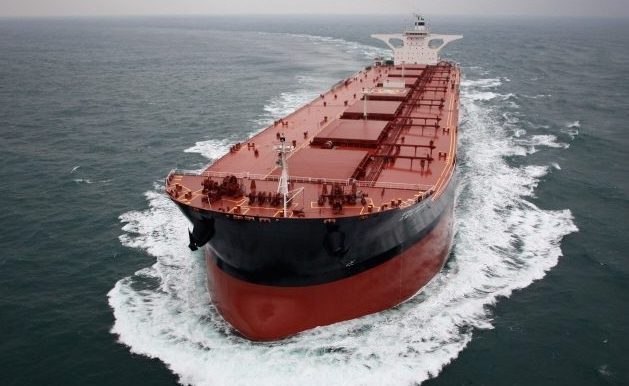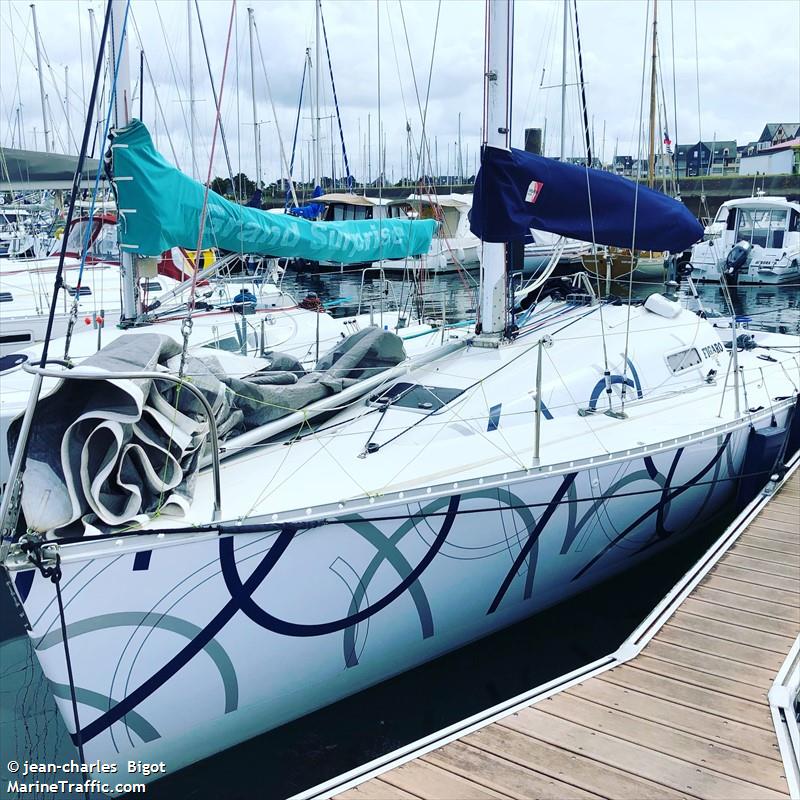Stellar Daisy: We are back to square one

Captain Manjit Handa, a bulk carrier master, reflects on the tragic sinking of the Korean ore carrier.
The loss of the VLOC Stellar Daisy at sea has brought home a feeling that as far as bulk carrier safety is concerned, we are back to square one. A series of well-intentioned and very detailed regulations and standards were adopted in the last 20 years to improve bulk carrier safety, yet Stellar Daisy went down in a copy book fashion, suddenly and caused by a catastrophic structural failure. Even though bulk carrier safety is a work in progress, can we, in the absence of any reliable solution on the horizon, take interim measures to prevent another sinking?
I assume the readers are well-versed with the keywords below that are relevant to any discussions on bulk carrier safety.
Age of ship. Annual Surveys. Assessment of ship’s stability. Asymmetrical cargo distribution. Asymmetrical ballast distribution. Bending moments. Close-up survey. Commercial pressure. Condition of Class. Corrosion. Coating breakdown during discharge. Deformation. Enhanced Survey Programme. Fatigue cracking. Flexing. High loading rates. High Density cargo. High Tensile Steel. Hold inspection. Large hatches. Liquefaction. Loading sequence/ Deballasting plan and execution. Local Strength/ Local loading criteria. Max cargo allowed in each hold. Progressive Flooding. Pounding. Panting. Quick capsizing of bulk carriers. Racking. Residual Stress. Shear Force. Side shell flexing. Side frame detachment. Structural damage during discharge. Transverse Bulkhead strength. Torsional stresses. Twisting of hull girder. Unreported repairs. Warping of the hull girder. Wave excited hull vibration. 2 hrly record of SF/BM.
In order to understand the factors affecting bulk carrier safety, a good document to refer is the IACS publication Bulk carriers – Handle with care since it captures quite well the shipping industry’s best understanding of the issue. The publication identifies nine major risks of hull or local structure overstressing and the consequent weakness (when loading high density cargoes.)
- Deviations from the loading manual.
- Shallow draught loading.
- High loading rates.
- Asymmetric cargo and ballast distribution.
- Lack of Effective Ship/shore communication.
- Exceeding load line marks.
- Partially filled ballast tanks or holds.
- Inaccurate cargo weight measurement during loading.
- Structural Damage
The precautions associated with the above are for the understanding and compliance of both the ship’s crew as well as the terminal operators.
Even though the risks listed above are well understood, control measures are not adequately applied by the operators and other stakeholders with sufficiently rigorous application.
· There is a surrender of responsibility usually by the ship’s crew to the terminal because the terminals’ claim that they have been loading ships since the beginning of time, hence they know best. The ship’s crew balk at stopping the loading if the deballasting is unable to keep up with the loading. There could hence be short spells when SF/BM exceed the permissible limits.
- During loading, we must move away from ‘keeping within permissible stress limits’ and move towards ‘keeping to minimum stress limits’.
- It is pretty common to see terminals trying to minimise the number of pours, sometimes even loading a particular hold to its full load in one pour.
- It is not the average loading rate but the max loading rate for a given time that could induce high local stresses.
- The ship’s crew do not usually conduct a thorough assessment of structural damage after any discharge operation, which is mainly because of the small number of crew and other workload of higher priority.
At the structural level, high risk ships are those that have all of the three factors:-
- bigger than panamaxes
- more than 15 years old
- Carry iron ore.
Most vessels generally start their service life as being adequate to the demands of the sea, but may become inadequate at some point later due to deterioration with age. Also our assumptions of the dynamic loads on the hull due to waves and ship’s motions might be drastically erroneous.
In view of the above, it may be necessary to derate big vessels progressively, by adjusting their load lines to reduce their cargo carrying capacity.
It is also important to improve compliance with safe working practices by:
- A tougher regime of cargo hold inspection (for structural damage) between two annual surveys.
- A more comprehensive recording of SF/BM during any loading/discharging operation.
- A better training of officers and crew on bulk carriers regarding the risks associated with high density cargoes.
- Insistence on all structural repairs to be reported to the classification Society.

 at sea has brought home a feeling that as far as bulk carrier safety is concerned, we are back to square one. A series of well-intentioned and very detailed regulations and standards were adopted in the last 20 years to improve bulk carrier safety, yet Stellar Daisy went down in a copy book fashion, suddenly and caused by a catastrophic structural failure. Even though bulk carrier safety is a work in progress, can we, in the absence of any reliable solution on the horizon, take interim measures to prevent another sinking?
at sea has brought home a feeling that as far as bulk carrier safety is concerned, we are back to square one. A series of well-intentioned and very detailed regulations and standards were adopted in the last 20 years to improve bulk carrier safety, yet Stellar Daisy went down in a copy book fashion, suddenly and caused by a catastrophic structural failure. Even though bulk carrier safety is a work in progress, can we, in the absence of any reliable solution on the horizon, take interim measures to prevent another sinking?
Thank you Splash for ‘up-to-dates’ and information on this ship. Haven’t seen a catastrophic sinking like this since El Faro
Very good article – the irony is not lost that as many persons tragically died on mv Stellar Daisy as died at the Manchester arena the day before yesterday. One wonders when the world will wake up and take multiple deaths at sea as seriously as on land…
Silence of the lambs, so innocent and white
Not even a sound comes out against the blight
May they be abused or may they be cheated
Nothing but silence by them is bleated.
Silence of the lambs, so pure and ignorant
Not knowing they are being sacrificed for others’ wants
May they be sad or may they be happy
Silence is the only thing bleated by so many.
by Han Min Ohn
Capt. Manjit,
An excellent and incisive commentary.
Korean owner. Korean Class, Korean shipyard. !!! must I go on.
Excellent article.
The idea of moving the load line down as the ship ages will be popular with shipbuilding intests. It will make everyone else sit up and take notice.
Shipbuilders greatly under specify the ballast pump capacity. The consequences are as Captain Handa relates. Owners don’t want to spend money on generators and on pumps that will only be used for a few hours in each voyage, to deballast whilst loading, so the officers are left in an impossible position and, as Captain Handa says, all too often the SF and BM are exceeded in the course of loading. Either we build slower loading terminals or IACS brings in a rule change…
One point that Captain Handa does not mention is the difference between a pure ore carrier (or ore/oiler) and a bulk carrier (or ore/bulk/oiler). The former, with smaller holds. on the centre line, may less vulnerable to a cargo shift, but their stability may be more seriously affected by loss of side shell integrity. Either way, the problems seem to relate to the carriage of ores.
Captain Handa’s commentary gets the overall picture right, I think. But the “Stella Daisy”? I think you had it right first time round – “Unsafe at any draught”.
How about imposing loading rate rules on the Port Operators with provisions that allow the crew to stop the loading progress without penalty if the rate of loading exceeds recommended limits according to the vessel’s filed loading plan? On the vessel operation side there are now and will be better in the future inexpensive structure monitoring sensors the can be placed in areas of known stresses that cause structural failure so that vessel crews can be forwarned of compromised structure.
Peter,
I like that idea very much.
The only problem is that we find ourselves in a regulatory void where terminals are concerned . Ships have international regulatory schemes of course, so it’s easy to enact rules for ships and it is sometimes possible to enforce them, despite the often lax nature of our industry’s organisations. Ports however have none.
If terminals are going to be regulated by law, then there is no international framework at all – the state in which the terminal is located wil not tolerate any “encroachment on its sovereignty”, and that state may be Australia or Brazil or Indonesia, etc.
Just possibly – possibly – the cargo insurers might be persuaded to take an interest, but since the cargo insurers are many and weak, it would have to be at the reinsurance level. The P&I Clubs however can act decisively at the level of the International Group, should they wish to do so. As a much younger man I was much involved, along with Paul Koronka and Michael Kelleher of the West of England Club, in putting a stop to the loading of unsafe coal cargoes from the USA. It would be interesting to learn whether today’s Club managers have the required intestinal fortitude for such actions…
Captain Manjit’s excellent article indicates the high degree of skill required by bulk carrier officers. Yet, unlike operators of oil, gas or chemical carriers no specialist courses or dangerous cargo endorsements are demanded. Why not?
Robert,
Couldn’t agree with you more. Everyone thinks one can just wing it on a bulk carrier. Most officers serving on bulk carriers truly don’t understand that short structural cracks are not an isolated event, but a manifestation of a deeper problem. Also there are a lot of unknowns when an old bulkie is carrying iron ore. Better sleep with the life jacket next to one’s pillow.
FOLKS
THE VESSEL SANK BECAUSE THERE WAS LACK OF MAINTENANCE !!
THE OWNERS DID NOT SPEND MONEY TO KEEP HER AT THE CORRECT STANDARD.
THERE R BIGGER ORE CARRIERS THAN HER AND NEARLY 30 YRS OLD BUT STILL TRADING FINE.
A SHIP HAS TO B LOOKED AFTER – PURE AND SIMPLE !!!!
THERE ARE ENOUGH RULES AROUND & AS IT IS SAID –
IT”S THE IMPLEMENTATION STUPID !!
Jolly, your’re quite right, but 30 year old bulkers trading “FINE” – I doubt it. I certainly would not sail on one! Especially the converted VLCCs .
robert,
not a conversion but good solid built well maintained – BERGE STAHL !!!!
Jolly, UK flag, says it all. Safe sailing.
now now, lets not bring the flag into this.
she started norwegian, then another, then another. all a tax angle !!
THE BASIC PRINCIPLE – THE OWNER SHUD B WILLING TO SPEND MONEY TO MAINTAIN A VESSEL & BERGESEN WERE WILLING TO TILL TDY.
Refer to the Australian “Bureau of Infrastructure, Transport and Regional Economics ( BITRE) ” , Report No 85 published in 1994 which is available on the website of the Govt of Commonwealth of Australia.
Although the pub is quite dated, the analysis is quite relevant even today. This paper concludes, by statistical analysis, that Flag is an important indicator of the likely health of the ship.
Seafarers from the traditional maritime nations know that the professionalism of mariners has deteriorated since the proliferation of FOC shipping, Political correctness, however precludes honest discussion.